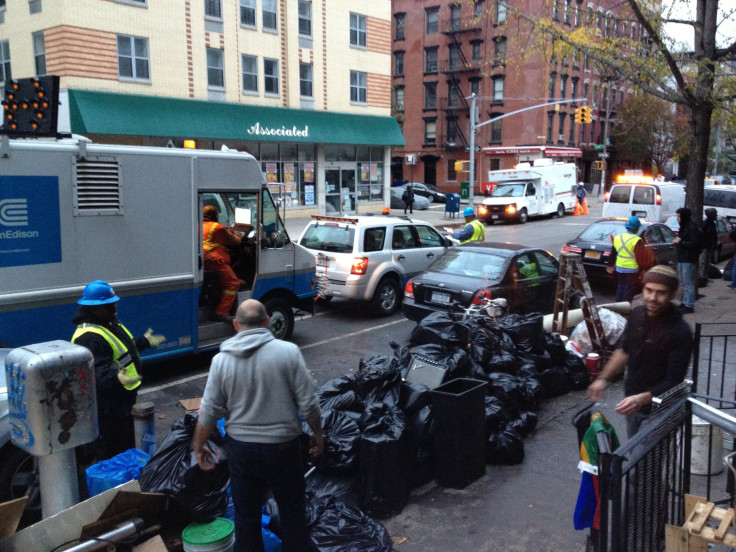Looming Nor’easter, Sub-Zero Temperatures Add To US East Coast’s Misery

There seems to be no respite for the people living in the New Jersey and New York coastlines as new challenges loomed for the region a week after Superstorm Sandy hit the East Coast.
Cold weather was settling in across the New York metropolitan region while weather forecasters predicted that a nor'easter — with potential for 55 mph gusts and more beach erosion, flooding, rain and snow — was expected to hit in the tri-state area of New York, New Jersey and Connecticut by Wednesday.
"Prepare for more outages," National Weather Service meteorologist Joe Pollina was quoted as saying by the Associated Press. "Stay indoors. Stock up again."
Temperatures sunk to 30s Fahrenheit (-1 to 4 degrees Celsius) overnight Sunday while power is yet to be restored nearly 2 million of homes and businesses in the U.S. northeast.
Temperatures could further drop into 20s Fahrenheit (-6 to -1 degrees Celsius) and bring “strong gusty winds” as the week progresses, according to the weather forecast.
According to a report in the New Jersey Herald which quoted Accuweather News Service, Sussex County, the northernmost in New Jersey, can expect to feel the full effect of a nor'easter moving up the Carolina coastline late Wednesday.
The storm system is expected to make its way up the East Coast past the Carolinas Monday and Tuesday and will turn inland late Wednesday with 60 mph winds on the New Jersey coast and driving rains expected for the higher elevations.
There is a consensus among the four major global weather models — the European (EURO), the UKMet, the Canadian and U.S. GFS — indicating that a strong fall nor’easter will begin forming Tuesday night and then move up the Mid-Atlantic and Northeast coast Wednesday and Thursday, the Washington Post has reported.
Falling temperatures has added pressure to expedite the recovery measures in areas battling gasoline shortage and continuing power crisis. New York City has opened warming shelters in areas without power supply and older residents lacking heating facility have been requested to move into them. The city administration also handed out blankets to residents, who insist on staying in their own homes despite the outage.
The authorities are battling with the pressing issue of finding housing for tens of thousands of evacuees whose homes could remain uninhabitable for weeks or even months due to the storm damage and the looming cold weather.
New York Mayor Michael Bloomberg said 30,000 to 40,000 New Yorkers may need to be relocated, daunting task in a city hard-pressed for housing and space. However, he added that the number could drop to 20,000 within a couple of weeks as power is restored in more places.
© Copyright IBTimes 2024. All rights reserved.






















